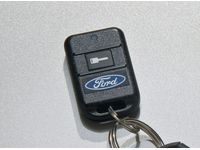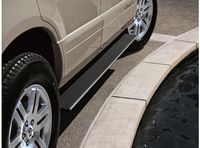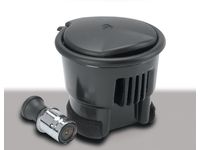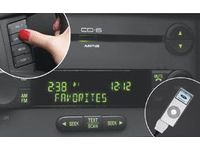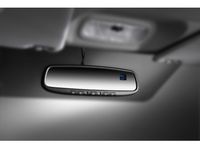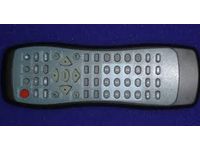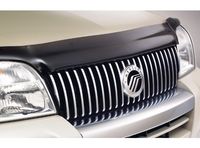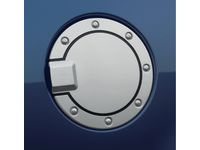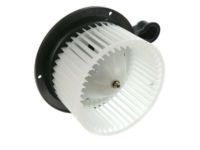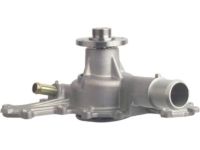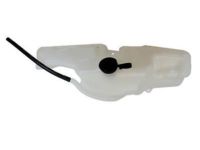- Live Chat
- 1-888-788-9341


Why choose FordPartsGiant
- Devoted Service
At FordPartsGiant.com, we strive to make customer satisfaction our #1 goal by providing dedicated customer service. Our core values of success continue to demonstrate our loyalty by building dedicated relationships with all of our current and future customers. We are always ready to assist you with the slightest detail about your vehicle's parts and accessories.
- Reasonable Prices
We are the best online source for discounted prices on factory auto parts and accessories. Not everyone has the money to buy their vehicle quality parts, here at FordPartsGiant.com we make it economical to buy the best parts without sacrificing the quality or hurting your wallet.
- Swift Delivery
FordPartsGiant.com has centrally located distribution centers all across the United States. This gives you quick access to our discounted Mercury Mountaineer parts when you need them. We offer our customers the convenience of having parts delivered straight to their front door. We are committed to having your vehicle up and running in just a couple of days.
Popular Genuine Mercury Mountaineer Parts
- Engine Parts View More >
- Chassis Parts View More >
- Electrical Parts View More >
- Body And Paint Parts View More >
- Lamps & Wiring Parts View More >
- Wheels & Brakes Parts View More >
- Fuel System & Manifolds Parts View More >
- Speedometer, Bumpers, Mirrors & Wipers Parts View More >
- Automatic Transmission Parts View More >
- Transmission Parts View More >
- Radiator & Grill Parts View More >
Shop Genuine Mercury Mountaineer Parts with FordPartsGiant.com
The Mercury Mountaineer, a mid-size luxury SUV produced by Ford's now-defunct Mercury division, was sold from 1996 to 2010. Known for its upscale interior and high-performance auto parts, the Mountaineer underwent three generations of upgrades. Its production began in April 1996, with a four-body configuration, and quickly became the third-best selling vehicle for Mercury. It boasted a model-specific grille and headlights, larger wheels, and a newly designed rear hatch. Powering the Mountaineer was a 215hp 5.0L V8 engine, mated to a 4-speed automatic transmission, with options for a 4.0L V6 SOHC and either rear-wheel drive or full-time all-wheel drive. In 2002, the second-generation Mountaineer debuted with a redesign, featuring four-wheel independent suspension and distinctive front fenders, hood, bumpers, lift-gate, and tail-lamps. This generation saw the transformation of the former silver waterfall grille into a rectangular design, and the expansion of trim levels to include a base Convenience trim and a luxury Premier trim. The third and final generation, running from 2006 to 2010, offered a DVD-based navigation system with voice control and power-retracting running boards, among other standard items. With its body-on-frame construction, the 2010 Mountaineer stands as one of the last representations of the old-guard SUVs. It is noted for its decent ride and traffic flow monitoring features.
Even the Mercury Mountaineer is not exempt from eventual wear and tear. Prolonging its lifespan requires understanding and resolving common problems. The first concern is engine issues, often indicating an approaching end of service life. Common signs, as reported by experienced Mountaineer drivers, include an overheating engine, poor performance, milky oil, white exhaust smoke, engine misfires, and a noticeable decrease in power, acceleration, and fuel economy. These symptoms usually subside after replacing the intake manifold or gasket. The second problem often involves the braking system. Since this directly affects driving safety, it's a significant concern. Drivers often report noisy brakes, pulsating brake pedals, slow brake response, and perceptible pedal vibrations. Additionally, score marks may appear on the rotor. Addressing this issue usually involves replacing the brake pads or the brake disc. Moreover, the fog light plays a crucial role in ensuring safe driving, particularly under adverse weather conditions like fog, wind, or heavy rain, as it provides better, clearer visibility. The antenna, while often overlooked, significantly enhances the driving experience by facilitating entertainment, thus making it an important part of modern vehicles.
In terms of quality, OEM parts are unmatched. They undergo comprehensive quality control checks and are manufactured following Mercury's official factory standards. All these steps ensure the elimination of flaws and irregularities. Therefore, you can rest assured knowing they offer an extraordinary lifespan and a perfect fit. Discover the OEM Mercury Mountaineer parts, including Fenders & Hood you need here, all at unbeatable market prices. Every genuine Mercury Mountaineer part we stock comes with the reassurance of the manufacturer's warranty. Additionally, we offer a seamless return policy and speedy delivery service for a truly worry-free shopping experience.
Mercury Mountaineer Parts Questions & Answers
- Q: How to remove and install blower motors and resistors in a Mercury Mountaineer?A: Remove the lower trim panel below the glovebox and the electronic shift control module if applicable. Disconnect the connector from the blower motor resistor, remove screws, and extract the resistor. To install, reverse the process. For the rear resistor, remove the left rear quarter trim panel. Detach the connector, remove screws, and extract the resistor. Installation is the reverse process. For the front blower motor, remove the lower trim panel, the vacuum tank screw, and separate the tank from the heat control unit. Disconnect the connector, remove screws, and extract the motor. For the rear motor, remove the left rear quarter trim panel, disconnect the hose and connector, remove screws, and extract the motor. Installation is the reverse process.
- Q: What are the signs of a failure in the water pump on Mercury Mountaineer?A: Water pump failure can cause engine damage due to overheating. If the pump seal fails, coolant leaks from the front cover in V6 models or the water pump housing in V8 models. The water pump is located in the front cover for V6 engines and in a housing in the engine block for V8 engines. Water pumps have weep holes that can be checked for leaks with a flashlight. If there's heavy brown staining or visible coolant, the pump needs replacing. If the pump shaft bearings fail, a howling sound may be heard. Shaft wear can be felt by rocking the water pump pulley. Don't confuse drivebelt slippage, which causes a squealing sound, with pump bearing failure. A quick pump check is to turn on the heater; if the pump is failing, it won't circulate hot water efficiently.
- Q: How to remove and clean the coolant expansion tank on Mercury Mountaineer?A: Drain the cooling system. Disconnect the reservoir hoses by removing the spring clamps from the reservoir hoses and carefully twisting the coolant hoses off the reservoir. Plug the hose to prevent leakage. On 2006 and later models, the coolant reservoir is mounted on top of the radiator. Remove the reservoir mounting bolts and lift the reservoir out of the engine compartment. Clean out the reservoir with soapy water and a brush to remove any deposits inside. Inspect the reservoir carefully for cracks. If you find a crack, replace the reservoir. Installation is the reverse of removal.


















































